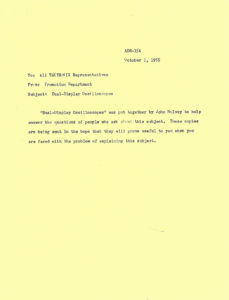Dual trace scopes are a single beam / single gun design which either alternate or chop the vertical signal. Alternating draws one trace then the other which works fine at high horizontal rates but not at low. The other method is to Chop between the signals at about 1 MHz which works fine on slow horizontal rates but not at high. In addition horizontal must be common between the two traces. The solution to these limitations is the Dual Beam Oscilloscope which is fundamentally two complete oscilloscopes in a single package sharing the package, power supply, and CRT phosphor. Inside the CRT are two complete gun assemblies.
This October 1, 1955 memo describes the differences between dual trace and dual beam oscilloscopes. Click on the image to view the PDF.
The 502A was Tektronix initial response to Hewlett Packard's first successful oscilloscope products in the mid-1950s. All the Hewlett Packard oscilloscopes had sub-1 MHz bandwidth. The 502 had a maximum bandwidth of 1 MHz, but it had higher sensitivity at lower frequency than Hewlett Packard's early scopes. The 502A was introduced in 1963. This photo of a 502A Dual Beam oscilloscope is from the 1964-1965 Tektronix Catalog.
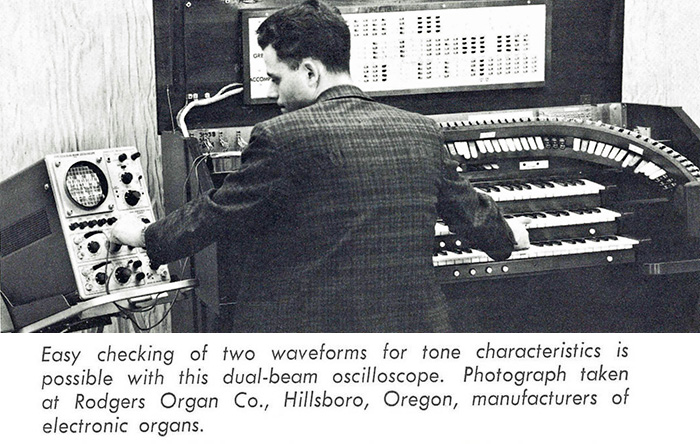
Here are two artifacts from oscilloscopes that were never developed. This letter describes the Type 552 dual beam oscilloscope under development but never released.
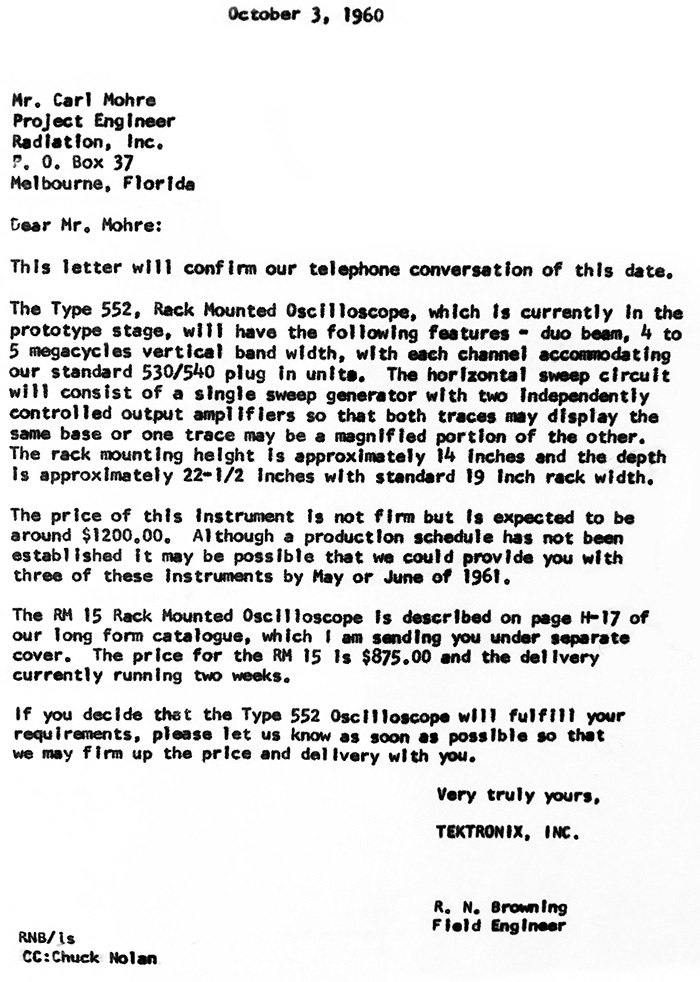
This concept drawing for the 553 dual beam oscilloscope featured two vertical and one horizontal plug-in
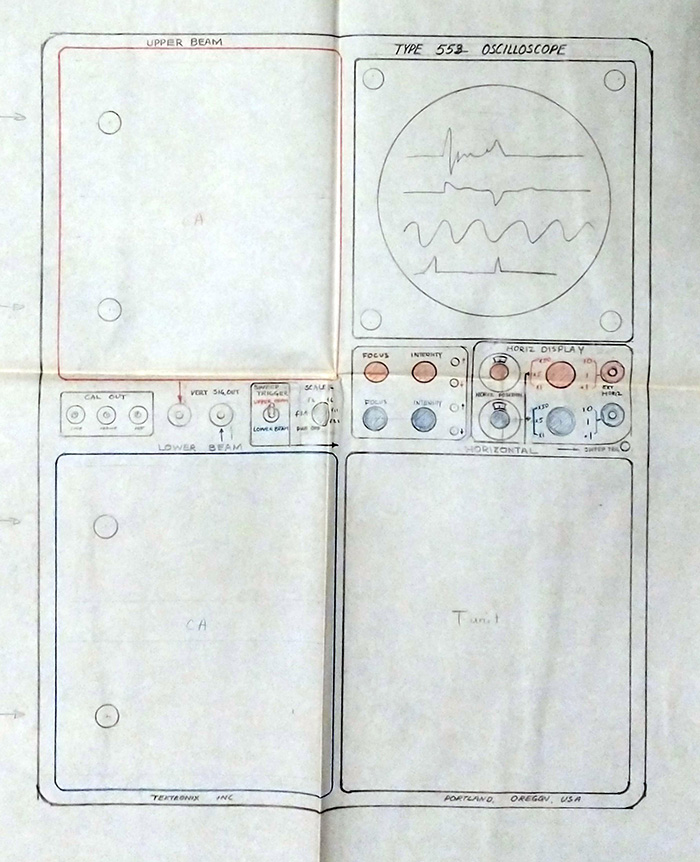
We have four dual beam oscilloscopes on display at the museum. The 555 Dual Beam Oscilloscope was introduced in 1959.
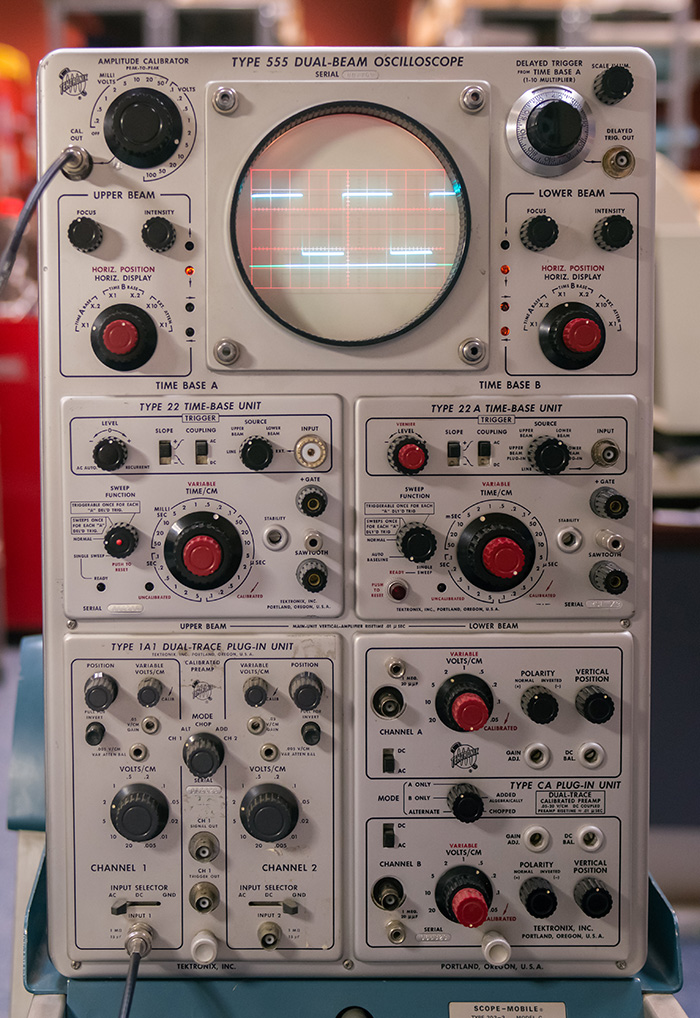
It was a very large scope and so had an external power supply which fits on the lower portion of a scope cart.
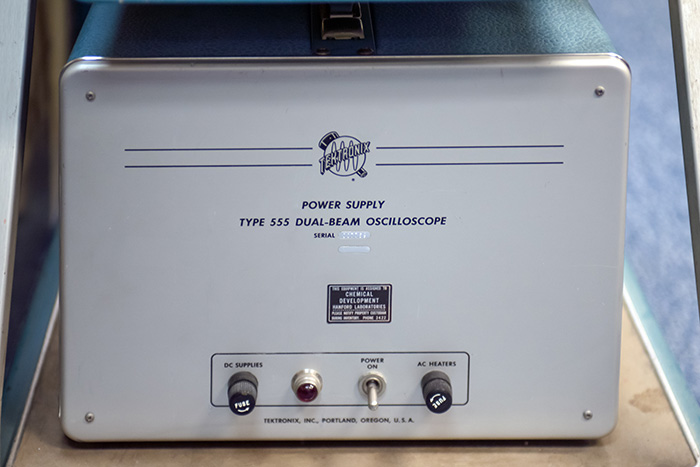
The inside is very symmetrical. The top plug-in latch is at the rear so you have to remove the side cover. There were only two different horizontal plug-ins (delaying and delayed). There are a lot of tubes in this scope and it generates a lot of heat.
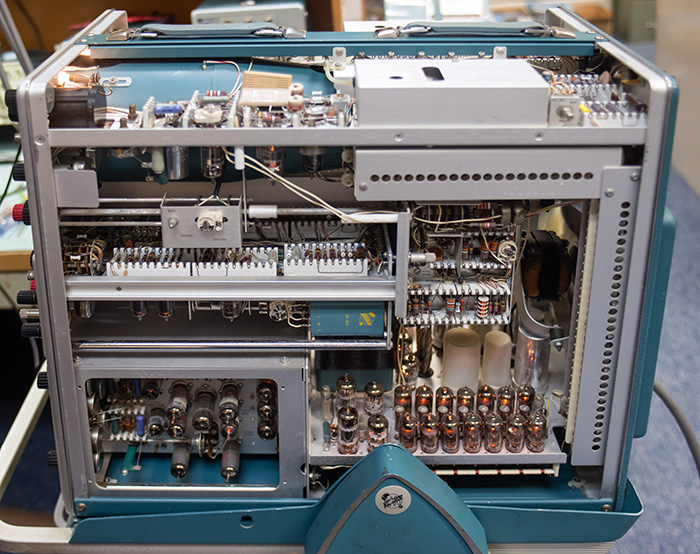
This photograph was in the 1963-1964 Tektronix catalog showing a 555 in use at Bonneville Dam.
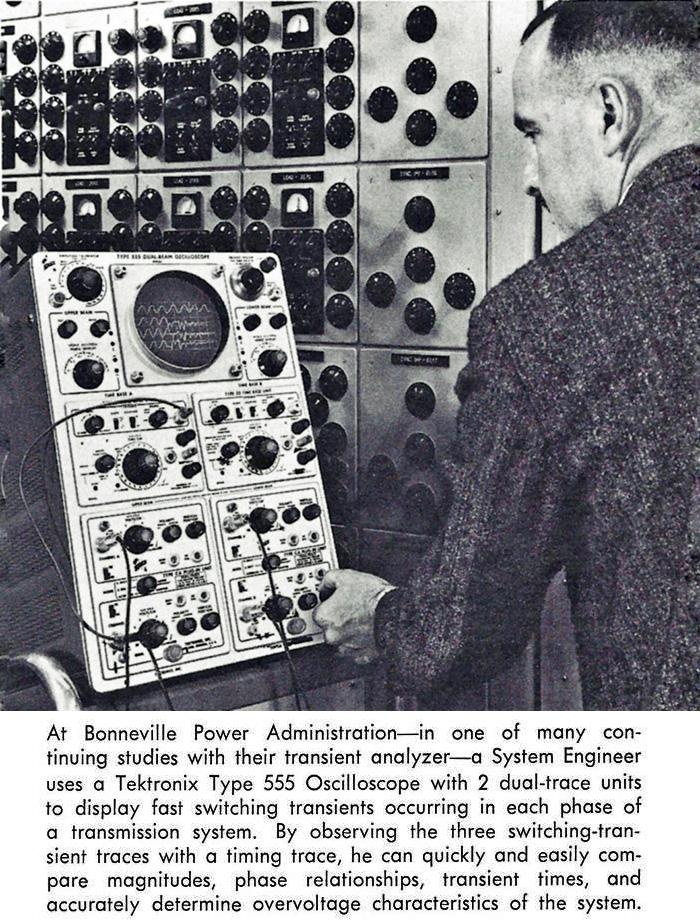
Here is a cartoon featuring the 555 that was in the May/June 1969 issue of Elementary Electronics.
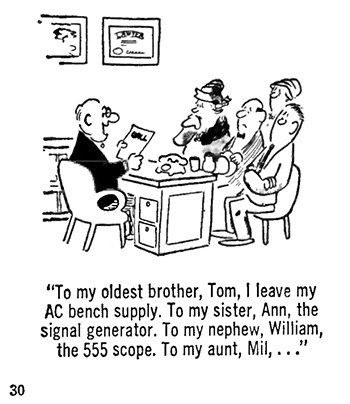
The Type 556 was introduced in 1966 and features a CRT with a spiral post accelerator and was a much more compact instrument. This scope features over 50 triggering and display modes.
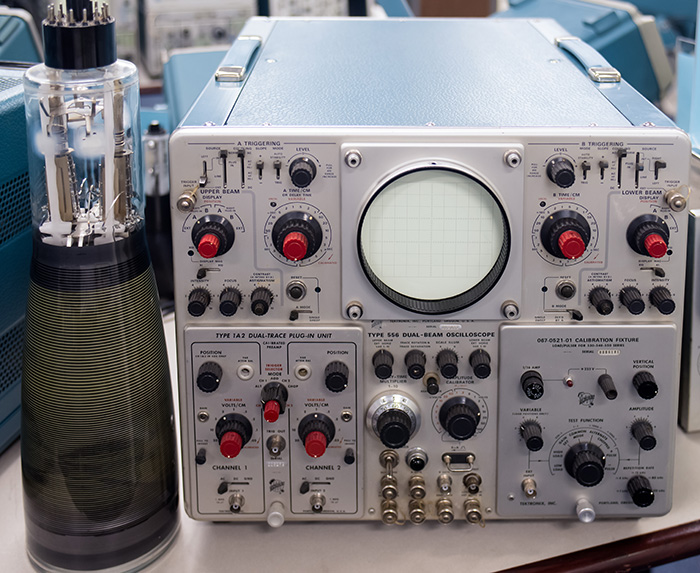
Here is a closeup interior view of the electron gun assembly.
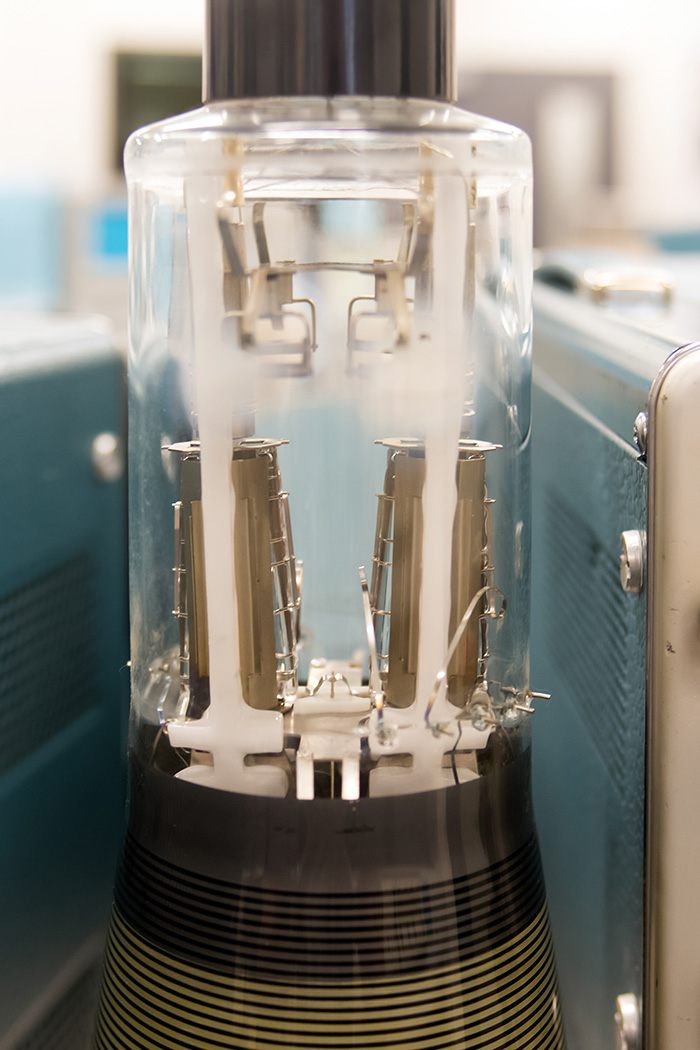
Our third dual beam oscilloscope is a 7844. It has all the improvements and advantages of the 7000 series line, with the added capability of having two horizontal plug-in slots. These can accept the full range of timebase units available in the series, including delaying, delayed and dual, and can be assigned in any combination to the two beams, providing great versatility. This one is displaying two waveforms with differing horizontal rates.
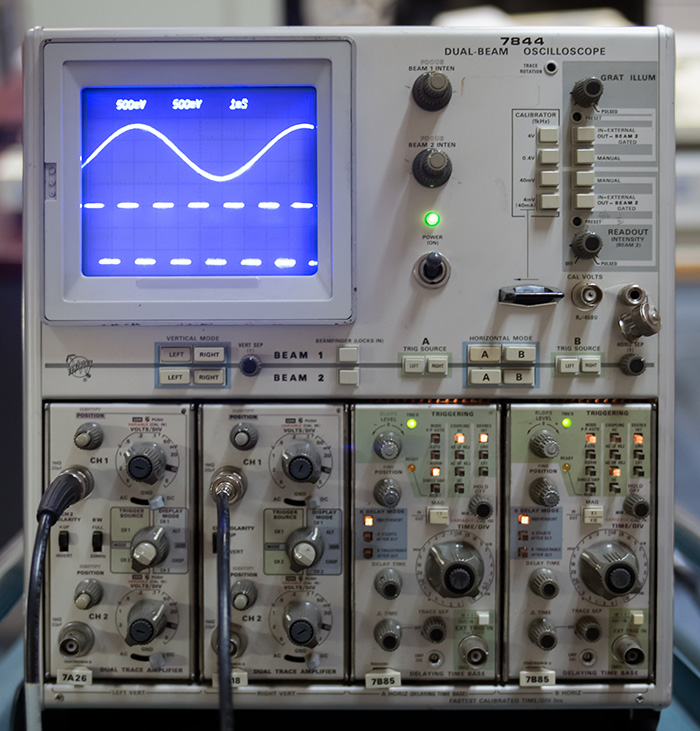
Our last is the monolithic 5031R dual beam oscilloscope. It has low bandwidth but very high sensitivity and found many applications in the medical field. It has fiber optic readouts similar to the 576 (see Fiber Optic Readout for more information). These readouts allow setup information to be captured in a screen photograph for future reference.
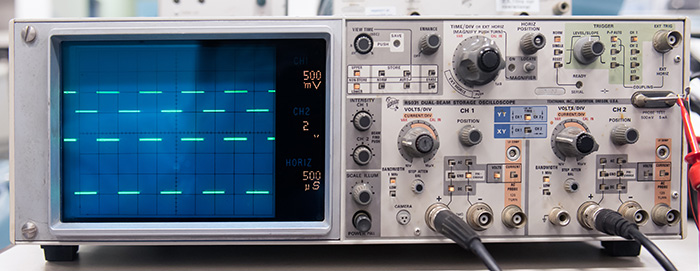
We also have an exhibit page for Dual Beam CRT Guns.

